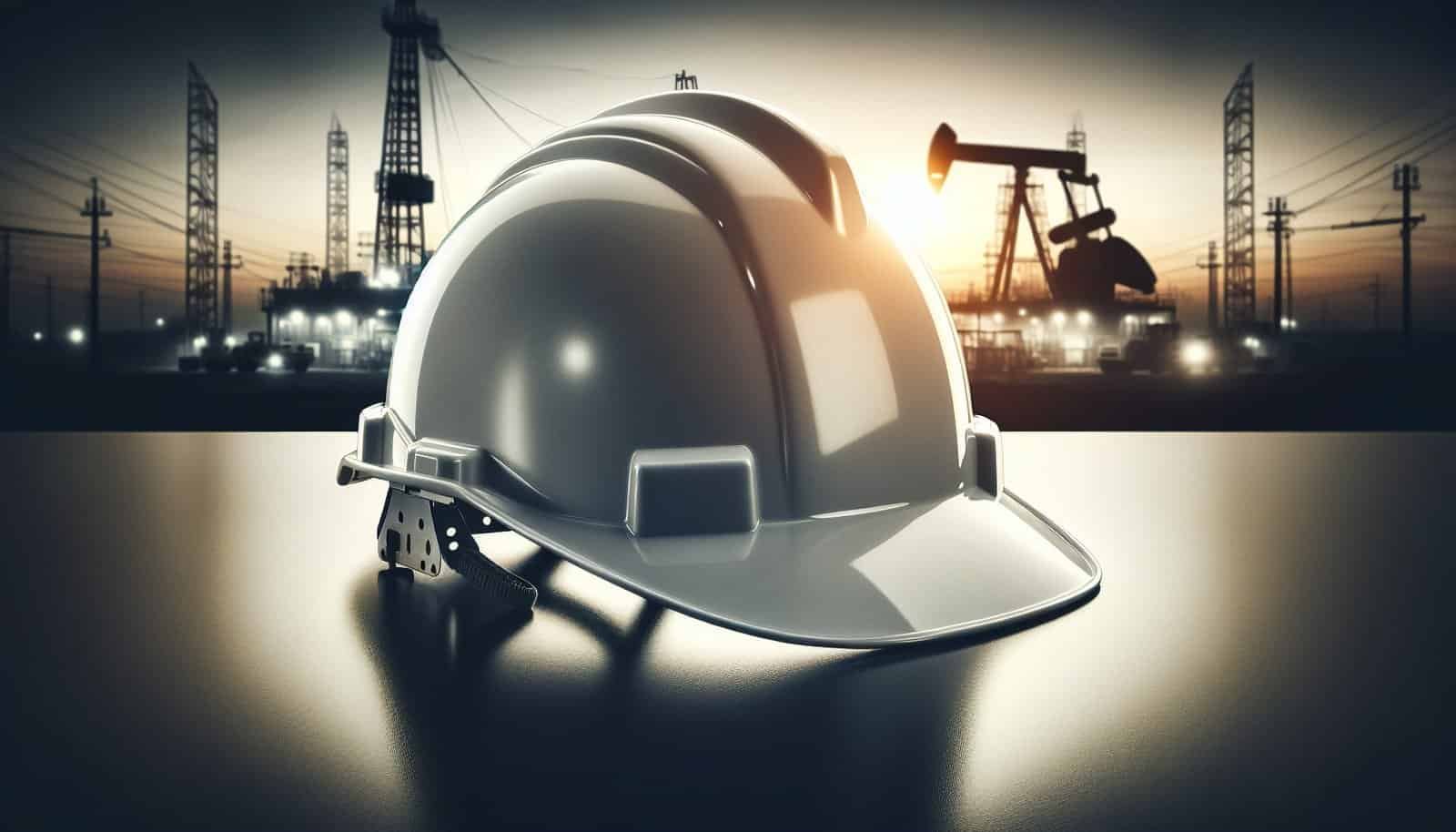What comes to mind when you hear about working around wells? Do you immediately think of the safety measures you need to take? If you find yourself wondering where to begin, you’re not alone. Many people are seeking to understand the best practices for ensuring safety when working around wells. It’s crucial to have these protocols at your fingertips, whether you’re a seasoned professional or new to the field.

Understanding the Importance of Safety Around Wells
Wells, while they can be sources of vital resources, are environments that pose significant risks if not handled properly. It’s critical to have safety protocols in place to prevent accidents and ensure that everyone involved in operations stays safe. The risks can range from falls and drownings to hazardous gases and equipment-related injuries.
The Dangers Involved
When working around wells, you might encounter several dangers. These hazards can be physical, such as falls from height, or chemical, like exposure to toxic substances. Understanding these dangers is the first step in mitigating the risks. Common dangers include:
- Falls: The area around wells can be slippery, or you might find unstable surfaces.
- Drowning: Open wells present a risk of drowning, especially if they’re inadequately covered.
- Toxic Gases: Wells can emit gases like methane or hydrogen sulfide, which are hazardous to health.
- Confined Spaces: Some wells may involve working in confined spaces, which comes with its own set of risks.
Why Protocols are Essential
Protocols exist to create a standard approach to safety that all personnel can follow. They ensure that everyone is aware of the risks and knows the action steps that should be taken to prevent accidents. These guidelines help create a safe working environment and can even prevent costly damage to equipment or infrastructure.
Where to Find Safety Protocols
Understanding where to access reliable safety protocols can make a significant difference. By knowing where to find these resources, you’re better equipped to ensure safe practices. Let’s explore the various sources from which you can gather this essential information.
Occupational Safety and Health Administration (OSHA)
One of the leading authorities on workplace safety is the Occupational Safety and Health Administration (OSHA). It provides comprehensive guidelines that are specifically tailored to various working conditions, including those around wells. Through OSHA, you can access detailed protocols that ensure the safety of workers involved in well operations.
How to Access OSHA Protocols
OSHA’s website is the primary platform where you can find the relevant safety guidelines. Simply navigate to the section concerning the specific industry you’re involved in. OSHA provides free resources, including training materials and safety checklists, to make sure you’re well-prepared.
Industry-Specific Organizations
Beyond government organizations like OSHA, there are also industry-specific bodies that provide valuable safety information. For example, the American Petroleum Institute (API) offers guidelines that are especially pertinent if you’re working around oil and gas wells.
Petroleum and Gas Protocols
The API provides standards that cover everything from well drilling to extraction procedures. Individuals working in the petroleum sector can rely on these standards to maintain high levels of safety.
Professional Safety Consultants
Sometimes, the best way to ensure the safety of your operations is to hire a professional safety consultant. These experts can offer tailored advice based on the specific challenges and conditions you face on the ground. They can help you craft custom safety protocols that are aligned with both industry standards and local regulations.
Key Safety Protocols to Implement
Now that you know where to find these protocols, let’s delve into some of the critical safety measures that you should consider implementing.
Fall Protection Measures
Working around wells often involves navigating heights or unstable surfaces. Using proper fall protection measures can mitigate the risk of falls significantly.
Types of Fall Protection Equipment
| Equipment Type | Purpose |
|---|---|
| Guardrails | To create barriers around edges |
| Safety Harnesses | To secure workers at heights |
| Safety Nets | To catch workers if they fall |
Ensuring that all personnel are equipped with the correct fall protection gear is crucial. In addition, regular training on how to use the equipment safely is essential.
Air Quality Monitoring
Monitoring the air quality around wells is imperative, considering the potential for toxic gases. Installing gas detection systems can provide real-time alerts if harmful gases are present.
Common Gases to Monitor
| Gas Name | Risk |
|---|---|
| Methane | Explosive and asphyxiant |
| Hydrogen Sulfide | Toxic and flammable |
| Carbon Dioxide | Can lead to suffocation |
These systems can be manually or automatically operated, but they must be regularly maintained and tested to ensure accuracy.
Hazard Communication Standards
Effective communication is key to maintaining a safe work environment. It’s important to ensure that all workers are informed about the hazardous substances on site and understand how to deal with them safely.
Labeling and Documentation
All chemicals and dangerous materials should be clearly labeled. Safety Data Sheets (SDS) must be available for each substance, providing information on handling emergencies. Training sessions on reading and understanding SDS can be valuable for all employees.
Training Essentials for Safety in Wells
Training is a cornerstone of safety in workplaces involving wells. Comprehensive training programs ensure that every worker is aware of the specific hazards and protocols related to their tasks.
Types of Training Programs
Investing in robust training can make a significant difference. The following are common types of training programs that can fortify your safety practices:
- General Safety Training: This involves familiarizing workers with basic safety practices, such as emergency response and evacuation procedures.
- Role-Specific Training: Focuses on specific tasks, such as operators’ training for heavy machinery or proper handling techniques for hazardous materials.
- Simulations and Drills: Regular drills for emergency situations, like gas leaks or well blowouts, prepare workers for real-life scenarios.
Virtual and On-Site Training
Thanks to technology, training can now be conducted both online and on-site. Online platforms offer interactive modules that can be accessed anywhere, making training more flexible. On-site training provides the benefit of hands-on learning under the supervision of experienced professionals.

The Role of Safety Inspections
Incorporating regular safety inspections is an effective way to monitor and maintain workplace safety.
Conducting Routine Inspections
Regular inspections can help identify potential hazards before they lead to accidents. It involves checking equipment, assessing the condition of well sites, and verifying that safety measures are in place.
Creating an Inspection Checklist
Creating comprehensive checklists can streamline the inspection process. This might include:
- Verifying that all equipment is functioning correctly
- Ensuring that all protective measures are in place
- Checking that workers are using safety gear appropriately
Routine inspections build a culture of safety and accountability among workers.
Emergency Response Protocols
Even with stringent safety measures, emergencies can still occur. Having clear emergency response protocols ensures that these situations are handled quickly and effectively.
Developing an Emergency Response Plan
Crafting an emergency response plan involves identifying potential emergencies and outlining the steps to address them. This includes defining roles for each worker, establishing communication channels, and maintaining a list of emergency contacts.
Components of an Effective Plan
An effective plan should have:
- Clear Communication Lines: Ensure that everyone knows who to contact first in case of an emergency.
- Evacuation Procedures: Outline specific evacuation routes and meeting points.
- First Aid and Medical Response: Ensure prompt access to medical supplies and trained first-aiders.
Training Employees on Emergency Protocols
All employees should be trained on how to respond during emergencies. This includes knowing how to use fire extinguishers, understanding evacuation routes, and performing basic first aid.

Maintenance of Safety Equipment
Keeping safety equipment in optimal working condition is just as important as using it. Regular maintenance and checks ensure that gear such as helmets, harnesses, and gas detection systems remain functional.
Scheduling Regular Maintenance
Implement a maintenance schedule that aligns with manufacturer guidelines. This could mean monthly checks for gas detectors or quarterly inspections of protective clothing and harnesses.
Record Keeping for Maintenance
Maintaining records of all maintenance activities ensures accountability and helps track the condition of equipment over time. It can be beneficial for audits and inspections.
Regulations and Compliance
Staying compliant with both local and international safety regulations is non-negotiable. Compliance helps mitigate legal risks and enhances workplace safety.
Understanding Regulatory Requirements
Familiarize yourself with all relevant legislation and standards applicable to your operations. This includes OSHA standards, industry guidelines, and local environmental laws.
Key Regulatory Areas
| Area | Description |
|---|---|
| Equipment Standards | Correct use and certification |
| Environmental Laws | Waste management and emissions |
| Worker Safety Laws | Training and PPE regulations |
Ensuring compliance may involve audits and submitting regular reports to regulatory bodies.
Staying Updated with Changes
Regulations can evolve, and keeping up-to-date with these changes is essential. Subscribing to legal updates or joining relevant industry groups can ensure you’re always informed about the latest requirements.

Building a Culture of Safety
Invoking a culture of safety is pivotal for maintaining long-term safety standards. When everyone is committed to making safety a priority, the whole operation runs more smoothly and efficiently.
Leadership and Safety
Leadership plays a critical role in shaping the culture of an organization. Leaders should model the behavior they want to see by prioritizing safety in every aspect of the operations.
Encouraging Employee Involvement
Involving employees in safety discussions and encouraging them to speak up about potential risks can enhance the overall safety culture. Conducting regular safety meetings and soliciting feedback can boost employee engagement.
The Future of Safety Protocols Around Wells
Technology and innovation are increasingly shaping the landscape of well safety. Embracing these advancements can usher in more efficient and effective safety practices.
Technological Innovations
From drones to monitor remote sites to wearable technology tracking workers’ health and safety, technological innovations are extensive.
Examples of Innovations
- Drones: Used for aerial inspections and monitoring of well sites
- Wearable Devices: Track real-time health metrics and alert workers to potential dangers
- Automated Systems: Safer control of well operations with automation
Blockchain for Safety Records
Blockchain technology is emerging as a valuable tool for maintaining secure and transparent safety records. It ensures data integrity, making tracking and auditing far more straightforward.
Concluding Thoughts
Working around wells necessitates a comprehensive approach to safety, requiring diligent adherence to protocols and ongoing education. By understanding where to find and how to apply safety guidelines, you can foster a safer work environment. Remember, safety isn’t just a protocol; it’s a culture that involves everyone, every day.

